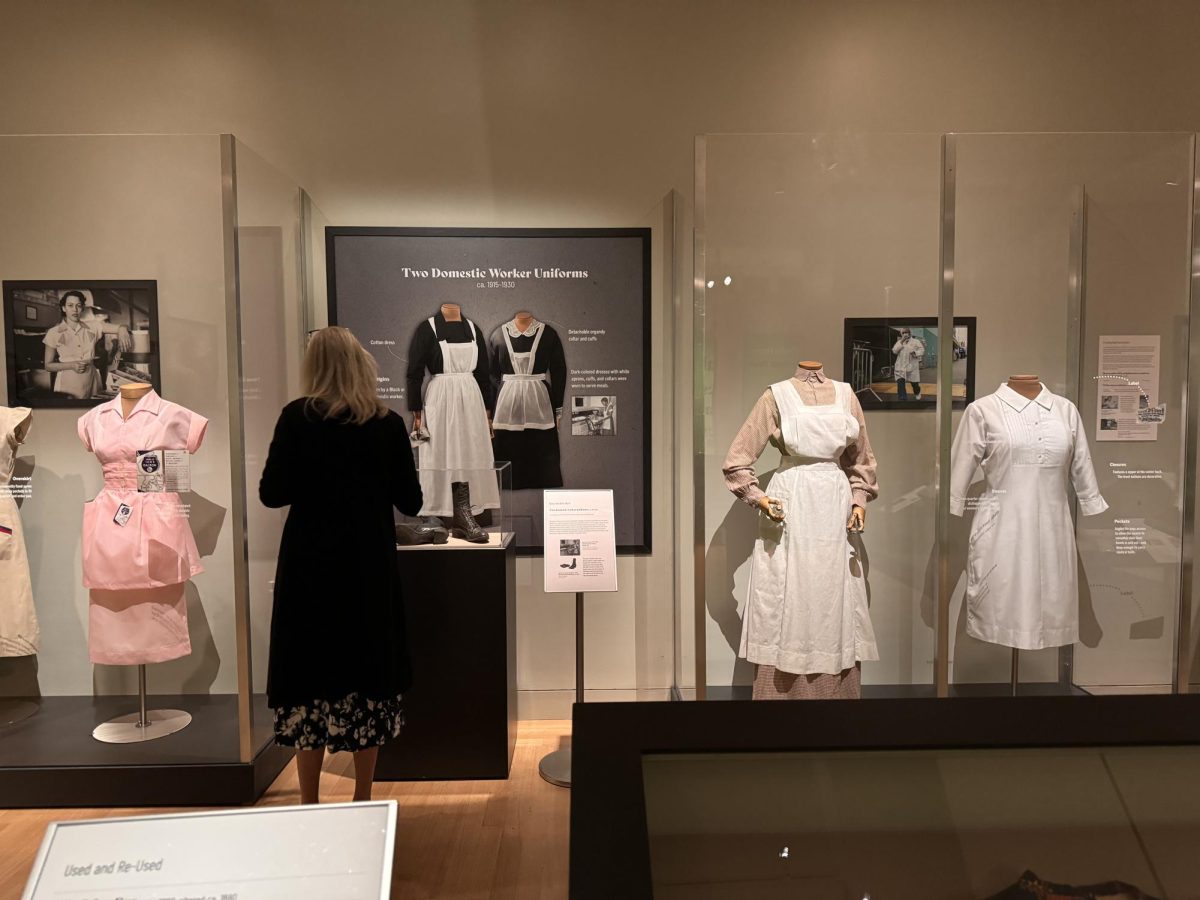From 19th-century corsets to the bold expressions of today, women’s fashion has adorned the body, and has served as a robust canvas for social change and identity, reflecting the evolving narrative of what it means to be a woman.
In the exhibition “Real Clothes, Real Lives” at the New York Historical Society, opened on Sept. 27, museumgoers may witness the evolution of women’s clothing over the course of 200 years. The exhibit showcases how fashion has pushed boundaries in response to shifts in women’s social positions worldwide.
As the definition of “woman” has evolved, so too have the garments they wore. In the exhibition room, one finds indoor clothes of gowns from the 1800s, the first female suits, military uniforms and micromini dresses while exploring female visions through the clothes they once wore.
Clothing is vital in marking significant life events — coming of age, marriage, maternity and mourning. Gendered and cultural conventions often influence the rules regarding what clothing is acceptable for these events. However, these traditions have evolved dramatically. Must brides wear white? Do pregnant people need to conceal their bodies? What does coming of age signify, and how do we mark grief? The answers to these questions are cataloged in the fabric of time.
19th Century: Bound by Tradition
In the 19th century, women’s fashion was heavily influenced by societal norms and class distinctions. Corsets defined the hourglass silhouette, emphasizing modesty and femininity, while gowns with elaborate skirts and fabrics were reserved for the wealthy. The use of materials like silk and lace signaled affluence, and styles varied greatly between social classes. Notable designers, such as Charles Frederick Worth, emerged during this period, popularizing the concept of haute couture and establishing the designer’s role as an arbiter of fashion. Women from all backgrounds adhered to the unwritten dress rules, with the “good” church outfit being diligently saved and repaired by those of lower economic status. The stark contrast in clothing choices highlighted the rigid class structures of the time.
20th Century: A New Dawn of Freedom to Breaking Barriers
The early 20th century announced a wave of change influenced by social movements, notably the suffragette movement. As women fought for their rights, including the right to vote, their clothing began to reflect their quest for freedom. The flapper style of the 1920s symbolized this liberation, with shorter hemlines, loose-fitting dresses and accessories like cloche hats that allowed women to move freely and dance. This era represented a departure from the restrictive garments of the past. Designers like Coco Chanel challenged traditional fashion norms, promoting the idea of simplicity and comfort. The mid-century brought further transformation, with women entering the workforce during World War II. The practicality of wartime clothing like trousers and tailored suits paved the way for post-war styles, such as the “New Look” by Christian Dior, which celebrated femininity while simultaneously reflecting the complexities of women’s roles.
21st Century: Empowerment Through Expression
Today, women’s fashion is a vibrant shade of self-expression and inclusivity. Contemporary designers are breaking boundaries, reflecting a broader understanding of gender identity and body positivity. Brands like Savage X Fenty by Rihanna and Chromat are at the forefront, championing diverse body types and redefining beauty standards. Sustainability has also become a crucial aspect of modern fashion, with initiatives promoting ethical production and environmentally friendly materials. Movements like the “slow fashion” movement encourage consumers to prioritize quality over quantity, fostering a more conscious approach to clothing. Social media platforms have democratized fashion, allowing various voices to flourish and influencing trends in real-time. Women now use the power of clothing to convey their identities, embracing styles that resonate with their personal narratives and experiences.
The collection offers a book for the visitors to leave their thoughts about the presented clothes at the end of the showing room. Many older museumgoers expressed that the exhibit brings back so many memories.
One person wrote “My clothes allow me to explore myself and how I present myself to the world. Sometimes it is not about what I wear daily but how my clothes evolve through my life.”
It is amazing to see elders’ words compared to the younger generations, as the exhibition is a link to their youth. Both generations are walking epitomes of the evolution of the way women were displayed and perceived by society through the decades.
As visitors reflect on the garments displayed, they are invited to consider not only the history of women’s fashion but also its ongoing evolution, reminding us that clothing remains a powerful medium through which identity and empowerment are expressed across generations.
The exhibition “Real Clothes, Real Lives” will run through June 22.


